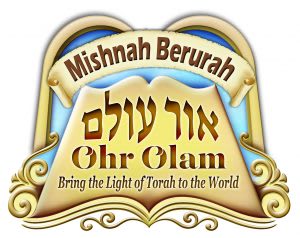The Havdalah Candle

Question: Is it permitted to recite borei meorei ha-eish over an incandescent electric light bulb?
Discussion: To commemorate the creation of fire, which took place when Adam ha-Rishon rubbed two stones together to produce fire on the first Motzei Shabbos after Creation, we light a candle on Motzei Shabbos and recite the blessing of Borei meori ha-eish over it. Lechatchilah, one should light a multi-wicked wax candle so that a substantial amount of clear, even light is produced. But if a multi-wicked wax candle is unavailable or not easily accessible, one may hold together any two candles - or even two matches - and recite the berachah over them. If only one candle or match is available, the berachah may be recited over that as well.209
Whatever type of candle is used, the berachah may be recited only if the candle was lit specifically for the purpose of giving light. A fire that was lit for another purpose, e.g., a flame that was turned on for cooking or to heat the home, or even a flame that was lit as a yahrtzeit candle, may not be used as a Havdalah candle. One may not even use a candle or flame that was lit for a dual purpose, i.e., both to give light and to serve another function, such as serving as a yahrtzeit candle.210
May an incandescent light bulb be used as a ner Havdalah? Some poskim permit this, since they consider an incandescent bulb to have the status of “fire.”211 Indeed, in the early days after the invention of the light bulb, when the halachic status of electricity was unclear, some poskim deliberately chose to recite borei meorei ha-eish over a light bulb in order to publicize their opinion that electricity is considered “fire” and is Biblically forbidden to be ignited on Shabbos.212But many other poskim disagree with this ruling and maintain that the berachah of borei meori ha-eish may not be recited over an electric light bulb,213 and this has become the more accepted custom.214 All poskim agree that the berachah may not be recited over a fluorescent bulb or an LED light, both of which are certainly not considered “fire.”
Question: What is the proper way to examine one’s fingernails by the light of the Havdalah candle?
Discussion: The berachah may be recited only if one is standing or sitting close enough to the candle to be able to distinguish between different types of coins by its light. Since coins are not always readily accessible, it has become customary to inspect one’s fingernails, as the ability to distinguish fingernails from the flesh of one’s fingers requires an amount of light comparable to distinguishing between different coin denominations. Consequently, many poskim advise that electric lights be extinguished while looking at one’s fingernails during havdalah, so that it can be determined that one is benefitting from the candlelight and not from the electric light.215 Other poskim are not particular about this,216 and both customs are widely practiced today.
Several poskim maintain that the berachah is recited only after one has looked at one’s fingernails and determined that one is benefitting from the candlelight.217 According to this opinion, the berachah of borei meorei ha-eish is a birchas ha-shvach, similar to the berachah recited over thunder and lightning, which is recited after the thunder is heard or the lightning is seen. Other poskim, however, maintain that the berachah of borei meorei ha-eish is a birchas ha-mitzvos, a berachah over the mitzvah of lighting a candle on Motzei Shabbos, and the general rule governing birchos ha-mitzvos is that the berachah is recited before the mitzvah is fulfilled. Accordingly, one should first recite the berachah and only then inspect one’s fingernails by the light of the candle.218 Although both opinions are valid, the more widespread custom follows the latter view: that the fingernails are inspected after the berachah has been recited.219 Some have a custom to look at the fingernails during the actual recitation of the berachah.220
209. O.C. 298:2.
210. See Beiur Halachah 298:11, s.v. ner.
211. Har Tzvi, O.C. 2:114, quoting Tzofnas Pa’aneich; Ashrei ha-Ish, Shabbos 13:8.
212. Rav Chaim Soloveitchik and Rav Chaim Ozer Grodensky, quoted by several sources; see Yechaveh Da’as 2:39. See also Achiezer 4:6.
213. Among other reasons, either because a filament is not really fire but just a “shiny heated piece of metal” (Har Tzvi , O.C. 2:114) or because the light cannot be seen directly but only via the glass that encloses the bulb.
214. Rav M. Feinstein (quoted in The Radiance of Shabbos, pg. 137); Meorei Eish 5:1, pg. 94; Ohr L’tziyon 2:22-5; Yechaveh Da’as 2:39; Chut Shani, Shabbos, vol. 4 86:2.
215. Custom at the home of Rav M. Feinstein (quoted in The Radiance of Shabbos, pg. 138).
216. Ashrei ha-Ish, Shabbos 13:10, quoting the custom at the home of Rav Y.S. Elyashiv. See Tehillah l’Dovid 298:4
217. Mishnah Berurah 296:31, quoting Pri Megadim; Brisker Rav (quoted in Chut Shani, Shabbos, vol. 4 86:6); Orchos Rabbeinu (vol. 1, pg. 130). Almost all of the early sources discussing this halachah mention the inspection before the berachah; see Tur, O.C. 296 quoting Pirkei R. Elazar and Yerushalmi Brachos 8:6.
218. Kitzur Shulchan Aruch 96:9; Siddur ha-Rav; Siddur ha-Gra; Siddur Yaavetz.
219. Chazon Ish (quoted in Birur Halachah 298:1); Igros Moshe, O.C. 5:9-9.
220. Based on Leket Yosher (Motzai Shabbos 6).
